With garden season in full swing, this month I’m digging into two cookbooks that focus on produce. The Book of Greens is one of my favorites. Portland-based author and chef Jenn Louis urges readers to think beyond salads and side dishes, incorporating greens into everything from pancakes, to pizza, to pierogi, to new twists on pesto: and not just because they’re good for you (although they are). As a reference book, it’s especially helpful in sorting out plants that go by a multitude of different names in different cultures.
This beautiful book was the first to get me beyond my usual go-to “spicy greens” preparation for Swiss chard (sautéing stems in olive oil, garlic, and chili pepper until near-tender, adding the leaves, covering and cooking on low for a few minutes, pinch of sea salt). Thanks to Louis, chard from my garden has learned to stretch its wings a bit with coconut milk, garam masala, pistachios & golden raisins over basmati rice.
Parts of plants that may have gone into the compost, like carrot tops, now find their way to the table, in a salad of with cabbage, dates, almonds, and a cilantro vinaigrette brightened by orange and lime juices. It’s a treat anytime, but especially in winter, when it looks and tastes the opposite of everything cold and dark.
What I appreciate most about The Book of Greens is the friendly introduction it offers to less familiar greens (that is, less familiar to me anyway). At our house, big purple bouquets of amaranth now offer a great alternative to cooked spinach. Gai lan, also called Chinese broccoli, is considered by Louis to be a “gateway green” because it is increasingly available in American grocery stores and less bitter than many greens. I try one of her dishes that uses it with turmeric, sesame oil and wheat noodles in an easy to make but complex tasting miso soup. The recipe calls for poached eggs, made by slipping each raw egg into a swirling vortex created in a pan of hot water using a spoon or whisk. (Yes, vortex swirling. Who knew?). Also in the “new to me” department were Chrysanthemum greens—which are a symbol of long life in Japanese culture, good fresh in salads and in soups and, if you needed any more encouragement, have more potassium than a banana.
Louis’ culinary talent really shines in this book. But readers get a taste of her personality as well, in a Greens Haiku that sets the right tone:
Writing a greens book
Lots of green stuck in my teeth
Hazard of the trade
A longtime farmers market rat, I love this month’s other featured book, The St. Paul Farmers Market Produce Cookbook. This “collection of favorite recipes from growers and their customers” is available from the library and also sold at the market if you’d like to scope it out there. Many of the recipes have few ingredients because—honestly—doesn’t a green bean or tomato fresh from a garden taste remarkable enough? Still, it’s a pleasure to look through these recipes, which hold some of the enduring kitchen wisdom passed on by earlier generations as well as more recent favorites. There’s tomato soup cake. Scarborough Fair Potatoes (tasty and hummable). Seventeen recipes for zucchini and thirteen for rhubarb (I like the looks of the rhubarb vinaigrette). Watermelon pickles and popsicles. Grandma’s Muskmelon Sundae (hint: it has ice cream and one other ingredient). A few restaurants have contributed as well; there’s Apple Rosemary Bread Pudding from D’Amico Cucina, and a Butternut & Blue Cheese Tart with Baby Arugula from Table of Contents. If you’re as old as I am, you’ll feel a pang of longing to remember Table of Contents next door to the wonderful Hungry Mind Book Store on Grand Avenue.
I tend to use this cookbook differently than my other cookbooks. Rather than using it when preparing a grocery list, I grab it off the shelf when I’ve already been to the market or garden and am hunting for ideas for what I’ve brought home. If I end up with a dozen ears of fresh-picked corn, I might eat a few, freeze a few, share a few, and try something new with a few, so none of it goes to waste. The St. Paul Farmers Market Produce Cookbook is great in that regard, offering tips for blanching and freezing, preserving jams and jellies, and pickling. I especially like their suggestions on what’s NOT recommended for canning (eggplant), and other don’ts, like “Don’t be alarmed if your jam or jelly doesn’t set right away.” It’s the voice of experience and kindness, taking pity on the person at home with a row of jars, a sticky kitchen, and a lost morning. (To which I might add, if that jam never does set, store it in the freezer and give it a new name, like smoothie mix or jiggle juice).
Another thing that sets this book apart from most others on my shelf is its lack of photographs, which—in this case—are not missed. A single black-and-white photo depicts the first farmers market in downtown St. Paul, built in 1870 at 7th and Wabasha: a scene of men in suits and horse-drawn wagons. Today, the big weekend market is in St. Paul’s Lowertown at 290 5th St. East. When I visited this July, over 150 years later, there was nary a horse nor suit in sight as I rounded the corner for my first view of the market. In their place were Irish bagpipe player Tom Klein and his friend, Opal. (Like the horses of yesteryear, dogs are asked to keep to the edges of the market.)
If you haven’t been to a farmer’s market, I hope you’ll make your way to one, large or small. It’s truly a feast for the senses. There are few places with such an abundance of color, laughter, chatter, and people of all ages, along with the glorious varieties of fresh-picked produce displayed on long rows of tables like so much fine art. According to St. Paul Farmers Market’s Director of Operations David Kotsonas, there are also new products that reflect new state rules fostering growth of the Cottage Food industry. “Growers are still at the heart of the farmers market,” he notes. Asked what he, personally, brings home to cook up, he doesn’t hesitate: “I like making roasted vegetables in my air fryer—like combinations of at least five kinds—with Romano cheese.”
The offerings change as new crops come into season. By July, the market is in full swing. I find tart cherries; sweet corn; sweet onions and tiny new potatoes. There are mounds and mounds of fresh-picked greens: mustard greens, chrysanthemum, amaranth. Gleaming organic kohlrabi. There is music in the air, and the drifting scent of barbeque.
Here is an audio taste (is there such a thing?) featuring some of the sounds and voices of the St. Paul Farmers Market. Thank you to those who took a few minutes for a chat or a quick photo, during such a busy time.
As I turn to go, I cut across the lot, where the vendors have pulled their vehicles up to their stalls to unload their goods and replenish as needed. A grower sits in his truck, his forehead resting on the steering wheel, asleep: a reminder that these are long days with early starts for the people on the other side of the tables. The sidewalks around the market are busy with people still streaming in. Others are laden with bags, heading to their cars, toward the Green Line at nearby Union Station, or their city apartments in the neighborhood. If they’re like me, their thoughts are already turning to their kitchens.

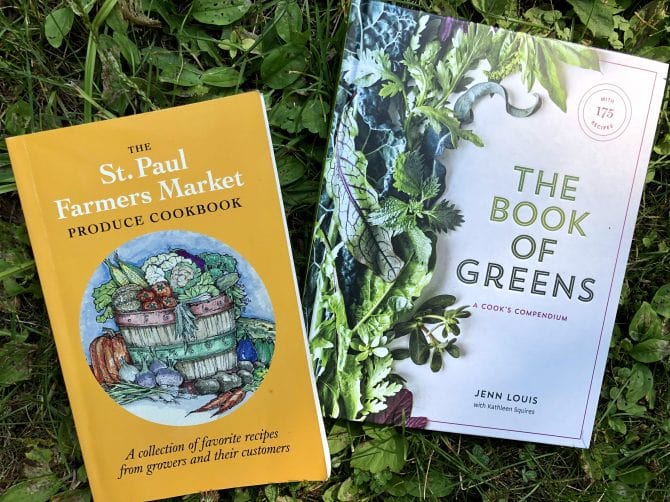
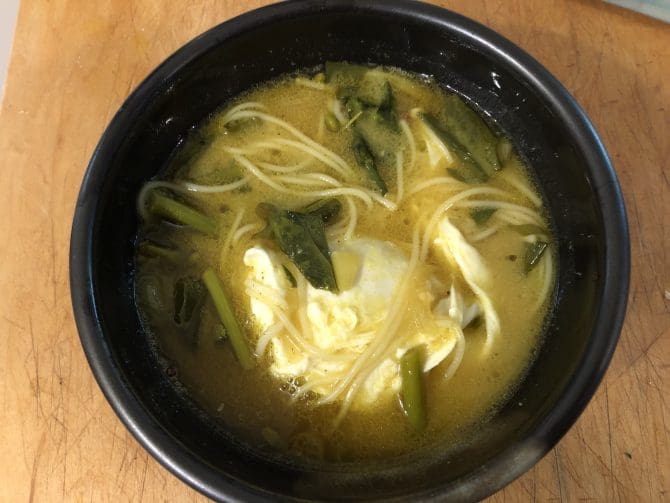
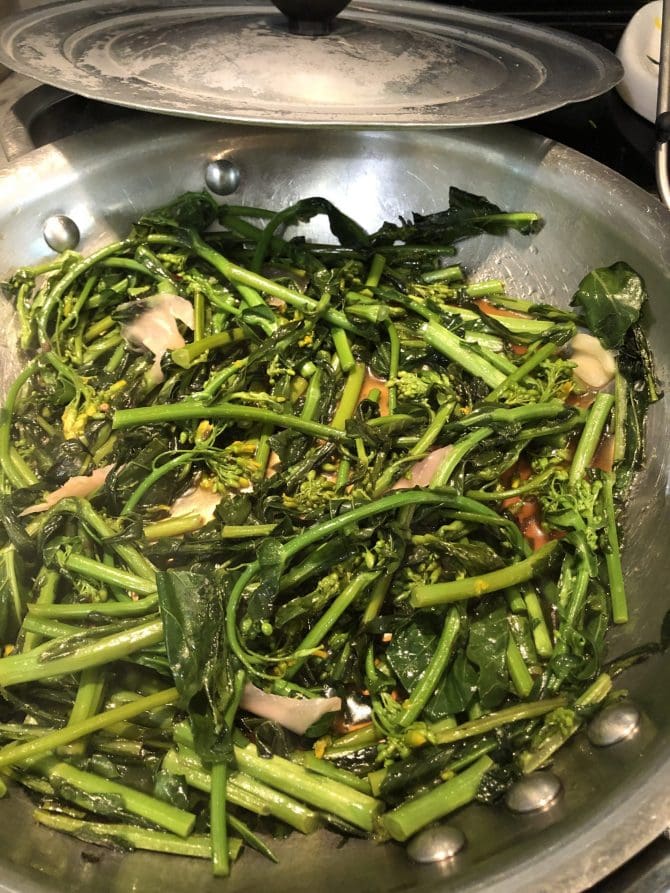



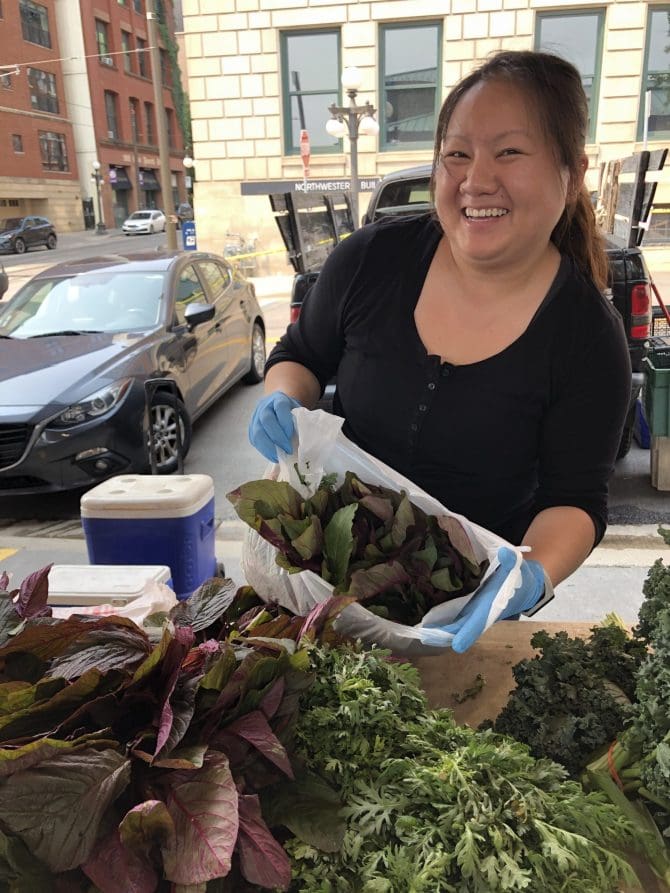
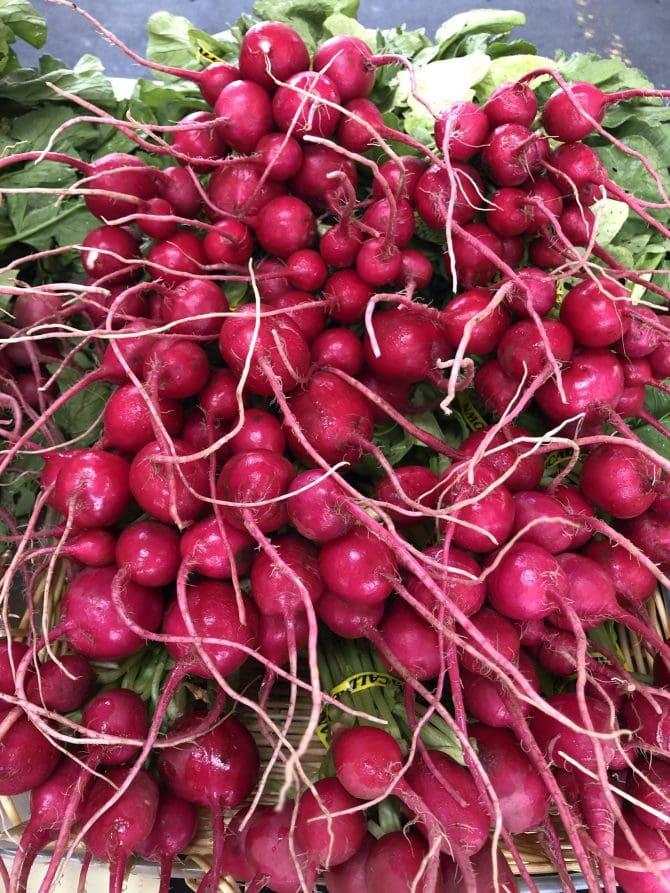
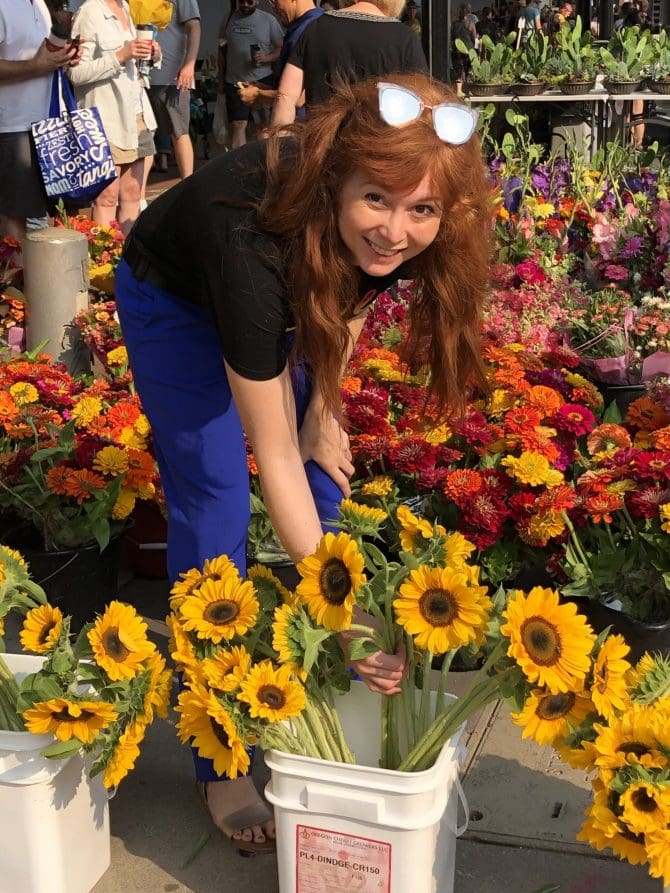

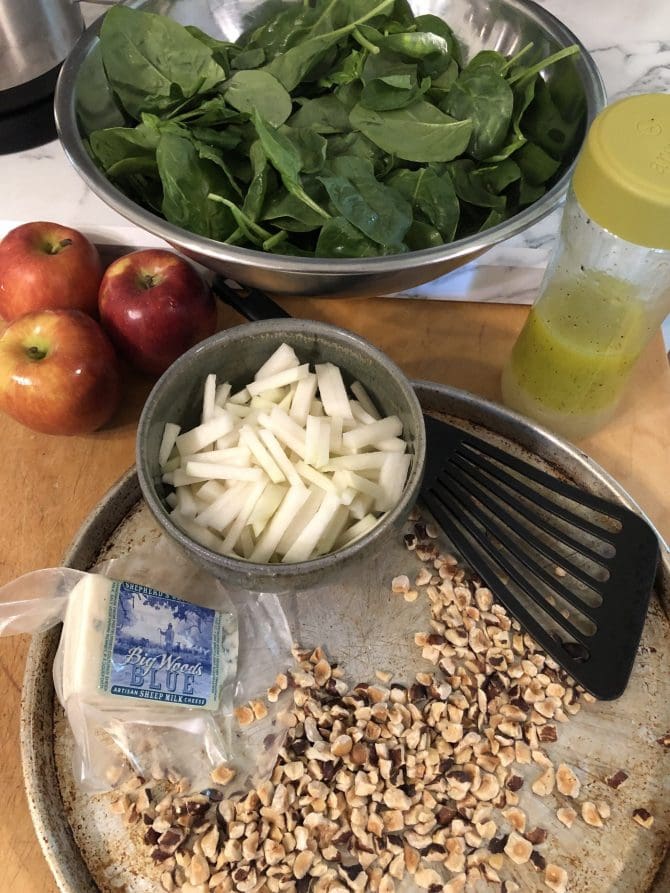


Add a comment to: Cooking the Books with Laurie Allmann: “The Book of Greens” and “The St. Paul Farmers Market Produce Cookbook”